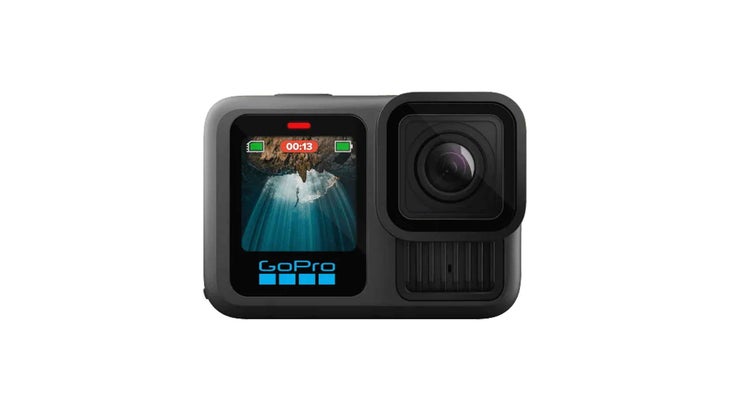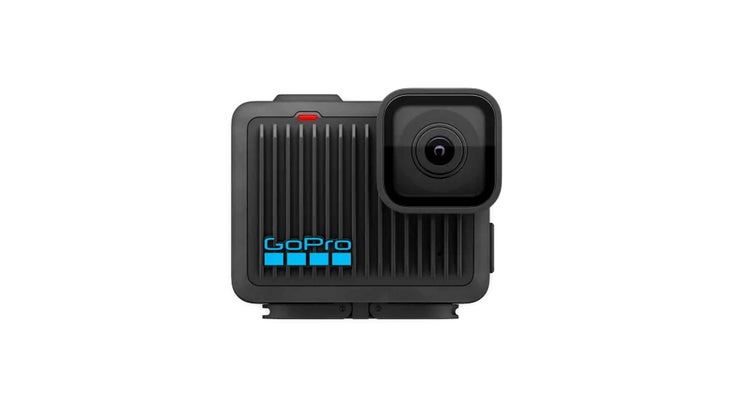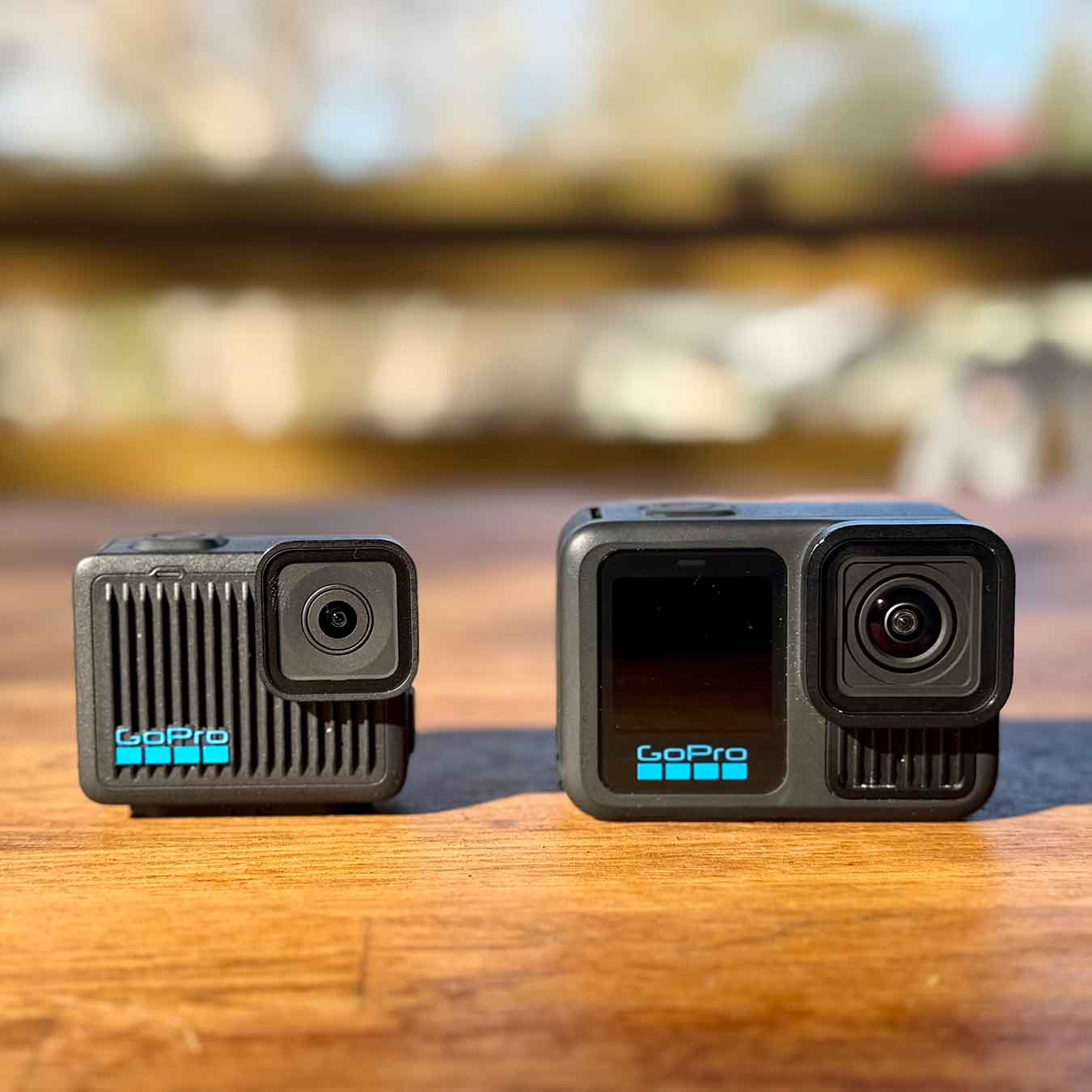I’ve been testing and writing about GoPro’s small action cameras since the first one was launched in 2004, watching as those cameras evolved from cumbersome chunks of plastic worn on your wrist to the content-capturing machines that they are today.
The two newest versions from GoPro, the Hero13, and the original Hero, continue that evolution. One is the most versatile camera GoPro has ever produced. The other might be the easiest to use. But which is the best option for you?
I spent the last month testing both in a variety of situations, from an epic ski trip to Palisades in Tahoe to a surf trip to Costa Rica to tame adventures on local trails in the Southern Appalachians. Throughout that period, I alternated between the two cameras on bike rides, golf rounds, ski days, and surf sessions, trying to determine which camera was the best.
The result is an enigma: The camera that I like the most personally is not the camera that I would recommend to most people. Here are my thoughts on the Hero13 and the Hero.

The Hero13��
The GoPro Hero13 Built-In Features
Let’s start with the Hero13, which is GoPro’s most versatile camera to date, ideal for serious photographers and content creators who need to get a variety of footage. The new camera uses the same sensor and processor as the previous ($288) but adds a few key upgrades that make it far more capable. That includes interchangeable lenses, a magnetic mount, and a suite of built-in features that allow you to customize the footage you capture by adjusting the resolution, aspect ratio, and even sound before you start shooting.
The Hero13 shoots professional-grade 5.3K video, which is rendered incredibly smooth thanks to the in-camera HyperSmooth 6.0 video stabilization. I shot some shaky ski videos recently that were so silky you’d think they were shot on a gimbal. The fact that this stabilization happens inside the camera means you’re not forced to edit your video in GoPro’s Quik app (more on that below).
It’s waterproof down to 33 feet, but even better is the hydrophobic lens, which sheds water, giving you crystal-clear shots when you bring the camera back up above the surface. I have a lot of useless footage from past surf trips when I used older GoPros that didn’t have this water-shedding lens; instead of epic footage, all I got were videos of blurry water drops. That’s less of an issue with this new lens. I used this camera during a week-long surf trip to Costa Rica, and probably 95 percent of the videos I took while in the surf were crystal clear. On previous surf trips with older models of the GoPro, I’d say that ratio was probably 50/50.
My favorite aspect of the new Hero13 is the tall image sensor, which allows you to shoot wide, vertical, or square videos and images without having to adjust the camera’s settings or lenses. I take a lot of videos for Instagram, which requires a vertical frame, but I also do some scenic and gear videos for this magazine and YouTube, both of which require a horizontal frame. I can switch back and forth from those two perspectives on the touch screen with the swipe of a finger before I start the video, or even better, I can shoot everything in Full Frame and decide later if I want to edit and publish vertically or horizontally in the GoPro Quik app.
This versatility means you can shoot footage with or without GoPro’s signature fisheye perspective, which is handy if you’re vlogging, getting scenic landscapes or closeups, or even if you just want a more straightforward first-person perspective. It also makes it easier to pair footage from the Hero13 with footage from other cameras, like your iPhone.
Hero 13 Add-Ons
And that’s just what’s built into the Hero13. You can also purchase add-on HB Series Lenses, like a Macro that gives you 4x zoom or an ultra-wide that offers a 36 percent wider field of view than the standard GoPro lens. Clip these lenses onto the Hero13, and the camera automatically recognizes which lens you’re using without the need to manually adjust the settings.
Most casual photographers won’t need to purchase these extra lenses, but everyone will appreciate the new Enduro Battery that comes with the camera, which is an absolute game changer. One of my biggest complaints with every GoPro I’ve ever used is the subpar battery life, especially in cold temps. This new battery is a beast with a reported 2.5-hour constant run time. I filmed with the Hero13 over several hours, from cold ski days to hot beach days, and never once ran out of battery.
Another fun tool in the Hero13 is the built-in Burst Slo-Mo, which offers three slow-motion options with different levels of quality. This is key if you ever want to throw your videos up onto a big screen; slow motion video from a low-quality camera blown up on a TV’s big screen can look blurry, but the Hero13 gives you five seconds of slow motion in crystal clear 5.3k quality.
The Hero13’s Downsides
Some professional photographers complained that the Hero13 didn’t get an upgraded sensor from the Hero12. While I do publish videos and photos on a variety of platforms, I don’t consider myself a pro photographer, so GoPro’s decision to stick with their previous sensor doesn’t bother me. I will say that the versatility of the Hero13 comes with a price; there’s a learning curve to the system, and it has taken some trial and error to figure out exactly which features I need. It’s like ordering from a menu that’s five pages long—with so many options, it’s hard to settle on a single choice.
Final Thoughts
Overall, I’m blown away by the Hero13’s capabilities. Straight out of the box, it drastically broadens the kind of footage I can capture. Considering all of the potential add-ons, from the new lenses to external lights and microphones, the Hero13 is out of the action camera category altogether. It is a powerhouse that can be my primary content-capturing tool, whether I’m standing in front of the camera for a vlog, attaching it to my handlebars for action footage, or just capturing a photo to support an article.

The Hero��
��
The Hero’s Upsides
Take the Hero13, cut it in half, and you have the Hero. It’s half the weight (86 grams to the Hero13’s 159 grams), roughly half the size, about half the price, and is even waterproof to about half the depth (16 feet to the Hero13’s 33 feet). That said, the tiny size is one of this camera’s selling points, especially if you like to mount a camera on your helmet.
Just like the Hero13, it has flip down mounting fingers, a removable hydrophobic lens cover, and a large touch screen on the back of the camera that you use to adjust the settings. It even has voice-activated controls, just like the Hero13, so you can tell this GoPro what to do without touching any buttons. Very cool.
The Hero’s Downsides
That’s where the similarities end, though, as the Hero is a straightforward, easy-to-use action camera without the bells and whistles of the full-featured Hero13.
For instance, you can’t change the resolution on the Hero (4K is the only option). It doesn’t shoot as well in low-light situations, and if you zoom in on the 4K footage, it’s a little blurry compared to the 5.3K Hero13 footage. You also can’t change the frame ratio; like older GoPros, it only shoots ultra-wide lens, fish-eye type footage, which might be a deal breaker for some users. Another limitation to note is that the HyperSmooth stabilization doesn’t happen in the camera. Instead, you have to upload your footage to GoPro’s Quik app before the video stabilizes. That’s not a big deal for most of us, but if you’re editing in a different software and bypassing the Quik app, you’ll be dealing with shaky footage.
The battery life is roughly half as good as the Hero13, and that’s being generous. The Hero repeatedly died halfway through each day on a recent ski trip. Granted, I was filming heavily, and it was cold, but I’ve been able to get through full days with the Hero13 under similar conditions. The Hero’s battery is within the camera, which eliminates the option of swapping out an extra battery.
Personally, my main issue with the Hero is that it only shoots ultra-wide lens footage. That’s a handy viewpoint for some shots, but I don’t want all of my videos to have a fish-eye view. You also have to mount or hold the Hero vertically in order to shoot vertical videos, which sounds like a silly thing to complain about, except most mounts hold GoPros horizontally. This kept me from getting vertical video during my Palisades ski trip, which makes for an awkward transition if I’m trying to match that footage with a vertical-oriented camera, like my phone.
Which Is the Better Camera For You?��
It sounds like the Hero13 is the camera I’m going to recommend, right? Not so fast.
I love the Hero13, and I think it’s the best GoPro I’ve ever tested. It’s the right camera for me, and I’m excited to keep using it for the various ways I capture photos and videos. But I think many of those features that get me excited aren’t necessary for the majority of users out there. While I mentioned many of the Hero’s limitations, I think it’s a great action camera, especially when you consider the budget-friendly $199 price tag.
The question you have to ask yourself is, what kind of photographer are you? If you just want to get the occasional clip of a surf session or a POV of you sending it on a gap jump at the park, then the Hero is probably the right camera for you. The tiny size means you can bring it almost anywhere and get some really beautiful footage that you might not be able to capture with your phone. But if you’re looking for a single camera that can capture a variety of styles of content in a small package, the Hero13 is the obvious answer.
Or maybe you’re like me, and you’ve convinced yourself you need both cameras: the Hero13 for its versatility and everyday capabilities and the Hero for its diminutive size, which makes it the ideal shooter for POV angles on a helmet mount.
Yeah, maybe that’s the answer here. Both cameras are the best cameras.


